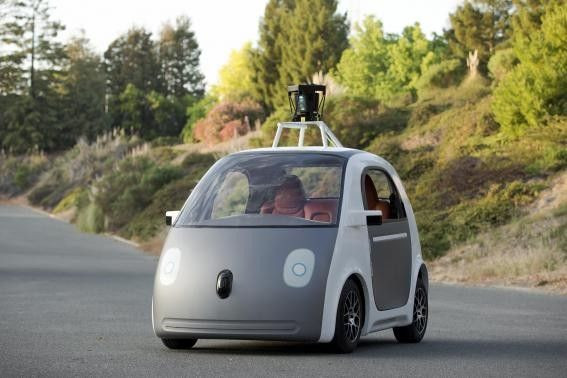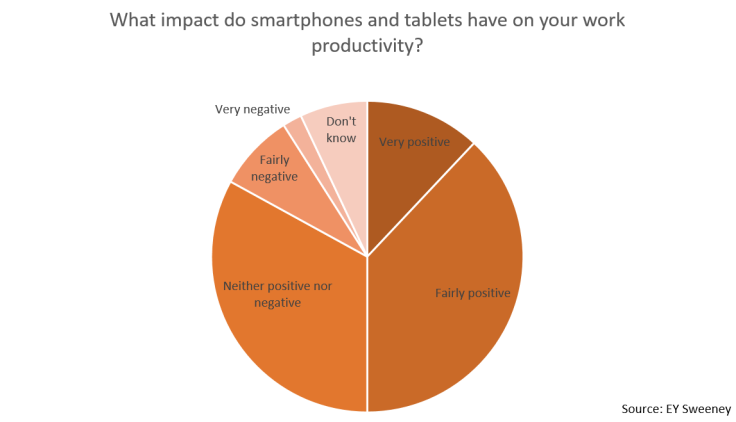Mobile technology added $43b to Australia’s economic growth in 2015, set to increase workforce participation, productivity further as IoT expands

Australia’s economy was $42.9 billion larger than what it would otherwise have been in 2015 thanks to mobile technologies that increased productivity and workforce participation across the country and various demographics.
A report released by Deloitte Access Economics found that the combined $34 billion in productivity savings and $8.9 billion in increased workforce participation from the use of more mobile tech for work were equivalent to 2.6 percent of Australia’s GDP.
It also found that mobile technologies indirectly supported the equivalent of 65,000 full-time jobs, or roughly one percent of the Australian workforce.
“Mobile has had a transformative impact on both productivity and labour force participation which, along with population, are two of the ‘three Ps’ we need to get right in terms of driving Australia’s future economic growth,” Deloitte Access Economics partner Ric Simes said.
The report, which is based on modelling from a survey of 1,000 Australians less likely to be working as well as data from 37 countries over 30 years, also found that young people as well as those who work part-time, have young children, have a disability, live in a remote area or are considering retirement, are working 0.6 more hours every week because mobile technologies were facilitating their work processes.
Twenty-nine percent of these people work from home at least some of the time, with mobile technology allowing almost 15 percent of respondents to work from home where they would otherwise have to work fewer hours.
Matthew Lobb, Chair of the Australian Mobile Telecommunications Association (AMTA) which commissioned the report, said mobile technologies have progressed significantly since their introduction three decades ago, and would continue to develop with the advent of advancements such as mobile wallets, autonomous vehicles and the Internet of Things.
“It is estimated that globally around 5 billion mobile devices are in use, and with the rise of the Internet of Things this is anticipated to grow to 6.4 billion in 2016 and 20.8 billion by 2020,” he said. “Australia must ready itself for the opportunities this will deliver.”
Future Potential
As mobile technologies expand into new avenues such as wearables, mobile payments and drones, so too will the potential for increases in workforce productivity and participation expand.
However, the initial development needed for future advancements is fifth generation (5G) networks, which are expected to address business demands for greater bandwidth and lower latency from 2020 onwards.

One area which will benefit from this is the Internet of Things (IoT), which refers to the network connectivity of everyday objects such as electronics and sensors that can collect and exchange data, allowing them to become more automated.
With around five billion IoT objects currently in use, the report anticipates that this figure will grow to 6.4 billion in 2016 and 20.8 billion by 2020.
Such growth will lead to strides in efficiency and productivity but it will be dependent on the greater bandwidth promised by 5G networks.
Driverless cars will also become much more practical thanks to the higher reliability and lower latency of 5G networks. Current 4G networks have latencies of around 40-80 milliseconds, but 5G networks are expected to reduce latency to around 1 millisecond.
Currently, if an autonomous vehicle operates under a cloud-based driving system, a sudden loss in connection could cause a crash.
If driverless cars become mainstream, commutes will become more efficient and more accessible. Not only will traffic jams become a thing of the past, but commuting will become more accessible to those who can’t drive themselves and don’t already have access to public transport.
These factors are of particular benefit to the groups surveyed in the report and will boost their workforce participation rates and productivity levels just as smartphones and mobile internet have, according to the report.

“Just as the benefits [of mobile technologies] to date have been significant and would have been unimaginable 20 years ago, there are still many areas and new mobile-enabled technologies – think driverless cars – that will further shape the way Australians communicate, work and interact, that will disrupt and revolutionise, and that will also drive future economic growth,” Simes said.
Addictive Behavioural Patterns?
The Deloitte report also found that over half of Australian smartphone owners check their phones within 15 minutes of waking up, while over a quarter do so within five minutes of going to bed.
Meanwhile, EY Sweeney’s 2016 Digital Australia survey found that while 69 percent of Australians say that smartphones and tablets help them to multitask, 31 percent admitted to being addicted to those devices.
While these stats raise questions about whether technology is also detracting from the productivity rates of workers, EY Sweeney’s survey also found that half of Australian smartphone and tablet users thought their device had a positive impact on their productivity, with only nine percent reporting smartphones and tablets as negatively impacting their productivity.






















